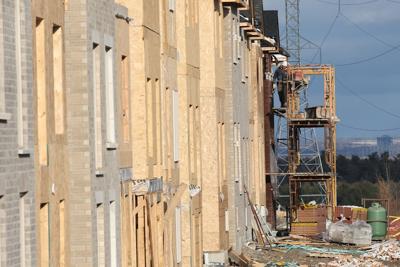The Greater ÎÚÑ»´«Ã½ Area (GTA) is facing a housing affordability and supply crisis that threatens not only the region’s economy but also its social fabric.
Two recent studies have underscored the factors that are contributing to this growing problem.
The deal would be conditional on developers providing a percentage of lower priced homes.
To reverse this trajectory it is crucial that we act swiftly to streamline development and increase the construction of homes that align with shifting demographic needs.
The first study, the , offers a clear snapshot of how the GTA is lagging behind in the efficiency of housing approvals.
The report found that the six GTA municipalities included in the study take significantly longer to approve new housing when compared to the other cities in the national sample (23 in all), lagging behind major cities like London, Edmonton, Vancouver and Calgary.
These delays not only slow down the construction process, they directly drive up building costs and home prices, making home ownership increasingly out of reach for many in the region.
This reinforced the findings of a , which revealed that the average approval timeline across 16 GTA municipalities is 21.6 months and that each month of delay adds $2,673 to $5,576 in added cost per unit.
Failure to cut building costs by modernizing the Development Charges Act, writes Dave Wilkes,
Compounding these issues is the growing need for larger homes to accommodate the GTA’s shifting demographics. The second study, a commissioned by BILD and the Ontario ÎÚÑ»´«Ã½ Builders’ Association, highlights a housing supply that is failing to keep up with the region’s evolving needs.
As Dr. Mike Moffatt, the study’s author, explains in greater detail in his column last week, the GTA continues to experience significant population growth, yet the region’s housing stock is not meeting the needs of families — particularly young families and the middle class.
The report forecasts that the region will need to build 30,000 ground-oriented homes and 20,000 apartment units annually just to keep pace with demographic shifts.
This represents a substantial increase in both the rate and mix of construction compared to the last decade, which has seen roughly 10,000 ground-oriented starts and 20,000 apartment starts per year.
The ‘Missing Middle Initiative’ study also emphasizes that 80,000 people a year (primarily young families with children) are leaving the region for other parts of Ontario, such as London and Peterborough, or even elsewhere in Canada, in search of affordable housing that meets their needs.
This underscores a significant planning challenge for municipalities in the GTA: how to encourage the development of larger, more family oriented housing at prices that these young families can afford?
After decades of policies that constrained land supply and focused on intensification, it is now essential to explore policy solutions that facilitate the cost-effective provision of housing that aligns with the current and upcoming demographic shifts in housing demand.
Both reports underscore the urgent need for reform across all levels of government.
To tackle the affordability crisis, the region must take concrete steps to simplify the approval process, which would reduce delays and development costs, enabling more homes to be built in less time.
And it must also take tangible action to lower development charges, which are significantly higher in the GTA compared to other provinces, and would further reduce costs and make new homes more affordable for buyers.
Additionally, the Missing Middle Initiative study calls for policies such as facilitating gentle density and expanding the availability of serviced land.
These measures would encourage the construction of larger apartments, including three-bedroom units, and are crucial to meeting the GTA’s increasing demand for family-sized homes.
The GTA’s affordability and supply crisis is an issue that will have a direct impact on the region’s long-term economic stability.
Families are already leaving in search of better housing opportunities, and the longer we delay making necessary changes, the greater the economic and social toll will be.Â
By addressing approval delays, reducing municipal fees, and focusing on the construction of homes that meet the region’s demographic needs, we can ensure that the GTA remains a place where people of all stages of life can find a home.

































To join the conversation set a first and last name in your user profile.
Sign in or register for free to join the Conversation